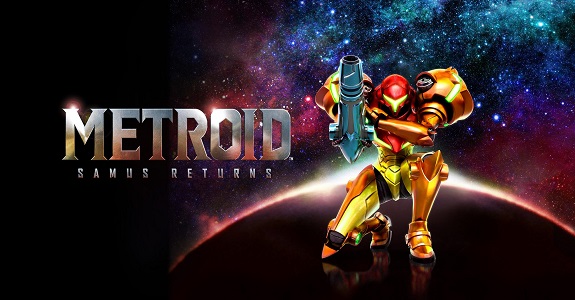Metroid: Samus Returns – Sakamoto x Marquez interview (why a remake, why MercurySteam, new sequences)
At gamescom 2017, French website Jeux-Vidéos.com had the oppotunity to sit down with Yoshio Sakamoto and José Luis Marquez, in order to talk about Metroid: Samus Return, the remake of the second entry in the Metroid series. The first question they asked was why Nintendo chose to make a remake of this particular game.
Yoshio Sakamoto first reminds us that they did release remake of the very first Metroid game (Metroid: Zero Mission), on GameBoy Advance, but they did nothing for Metroid II: Return of Samus. And yet, it’s a pretty important game in the series, which had a major impact on the games that followed, so Nintendo wanted to allow players to revisit this important entry in a more modern version.
[NB: what follows isn’t part of the interview itself, but is still relevant, so we decided to translate it anyway]
One of the reasons Metroid II: Return of Samus (and therefore, Metroid: Samus Returns, its remake) is so important is that it’s the game where Samus goes to the home planet of the Metroid… you know… the very creatures the name of the series refers to (and no, they really can’t crawl. At all).
She goes there in order to eradicate them all (because of the Space Pirates using them as weapons), but ends up sparing just one of them: the infamous “baby” (an infant Metroid), who saves her at the end of Super Metroid.
Another reason Metroid II: Return of Samus is a key game in the series is because it shows unique elements of Metroid not seen in other games, such as various stages of evolutions (including some evolutions/mutations not found in any other Metroid game). It’s also in this game that the design of the Varia Suit as we know it was first introduced.
As you can see, Metroid: Return of Samus is a must-play for any Metroid fan, but the game itself isn’t really what you’d call accessible… a remake was more than needed!
[Back to the interview!]
Yoshi Sakamoto has been interested in making a remake of Metroid II: Return of Samus (a game he did not get to work on back in the days) for a while, but he wasn’t really sure about the best way to do it, and with whom. Fortunately, he heard about MercurySteam and their interest in a Metroid remake, so he decided to go and pay them a visit.
That’s when he met José Luis Marquez, and realised that he and his team not only understood the Metroid universe pretty well, but also that they were big fans of it. After that, they were allowed to work on a prototype, and when Yoshio Sakamoto got to see it, he understood he had found the right partner for this remake.
Castlevania: Mirror of Fate is the only game developed by MercurySteam that Yoshio Sakamoto has ever played, but it was enough for him to realise they had both the necessary know-how and affinity to make a good Metroid game.
As you can imagine, working on a Metroid game was a dream come true for the team at MercurySteam… but also a lot of pressure.
José Luis Marquez, just like many other Metroid fans, was first introduced to the series with Super Metroid. He was quite engrossed with this one, and after that, he thought that he had to play all the others, in order.
For Metroid: Samus Returns, he knew that the most important thing was to keep the gameplay the series is know for. Every game has gameplay elements and abilities that they had to keep in order to stay true to the very basics, because those are what make the Metroid series so great for fans.
That being said, they did come up with new elements (such as the Aeion Abilities, for example), that were added to the game in such a way that they’re a perfect fit for the Metroid gameplay. After all, adding new abilities is a big deal for a Metroidvania-style game, since the whole progression is (almost) entirely based on the abilities of the players.
Besides the Aeion Abilities, new elements were also added to “modernise” the gameplay experience in Metroid: Samus Returns, with some welcome Quality of Life additions such as 360° aiming (something Nintendo already mentioned during the presentation at gamescom).
When talking about this game, Nintendo frequently uses the word “reimagining” instead of “remake”. That’s no wonder, because the game does contain major new elements not found in the original, such as the chase sequences with Diggernaut. It looks like this boss appears several times in the game (more than twice, according to José Luis Marquez). But it looks like it’s not the only brand new sequence found in the game…
As an extra, here’s a video clip showcasing Queen Metroid:
Metroid: Samus Returns (3DS) comes out on September 15th, worldwide.
Source: Jeux-Vidéos.com

